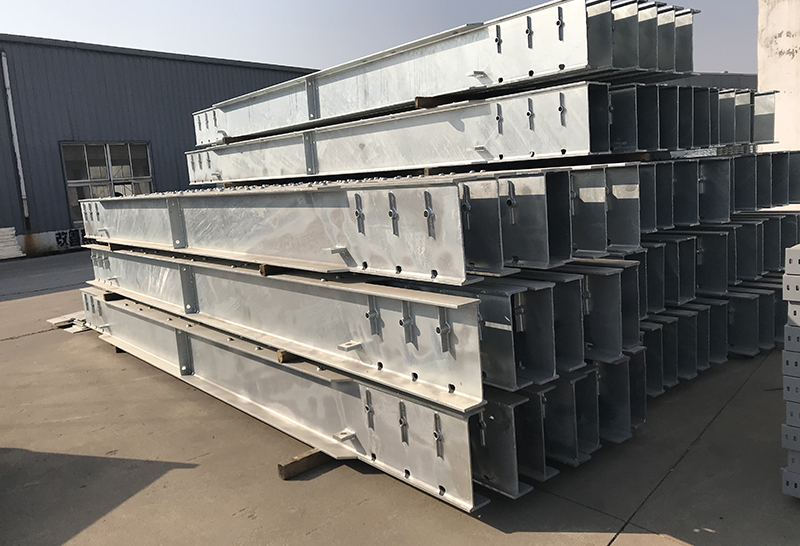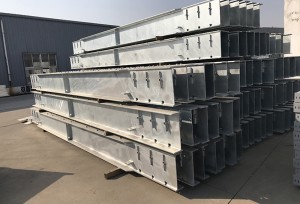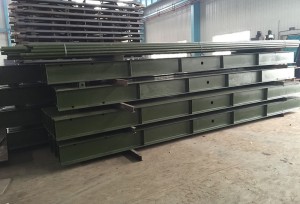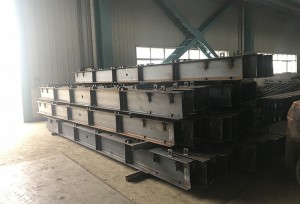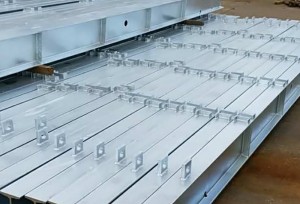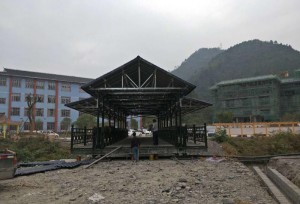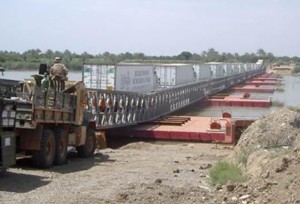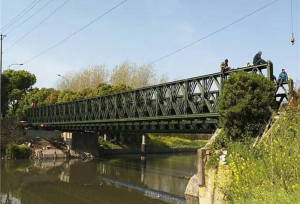Product introduction
Type 321 Bailey bridge beam generally uses 28I or H350, profiled steel. There are 4 sets of clamps on the beam to limit the position of the bridge deck or longitudinal beam. The two ends are welded with short columns to connect the diagonal braces. Concave eyes. When installing the crossbeam, insert the concave eye into the stud on the bottom chord crossbeam backing plate of the truss so that the crossbeam is in place on the truss. The spacing of the concave holes is the same as the spacing of the trusses. After the beams are in place, the spacing of the trusses is relatively fixed.
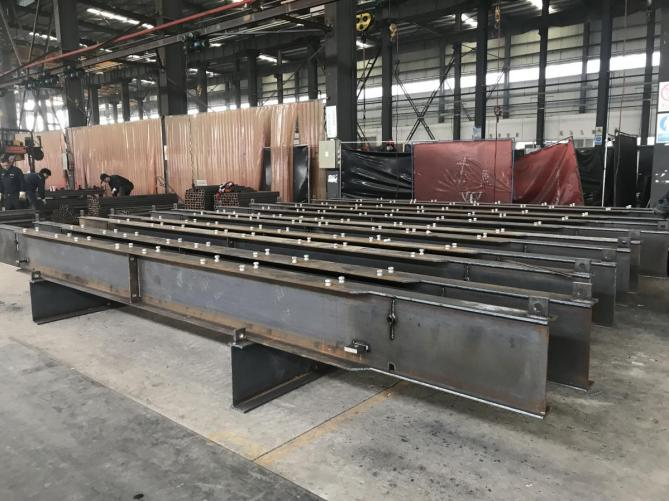
The beam clamp is composed of a tie rod, a suspension beam and a supporting rod; it is used to fix the beam. There is a protruding head at the end of the tie rod. When installing, buckle the protruding head of the tie rod into the gap of the backing plate of the cross beam. Fasten the beam tightly. The beam clamp cannot bear a large upward load. Therefore, when the beam is clamped by the clamp, it is forbidden to use a jack to lift it under the beam.
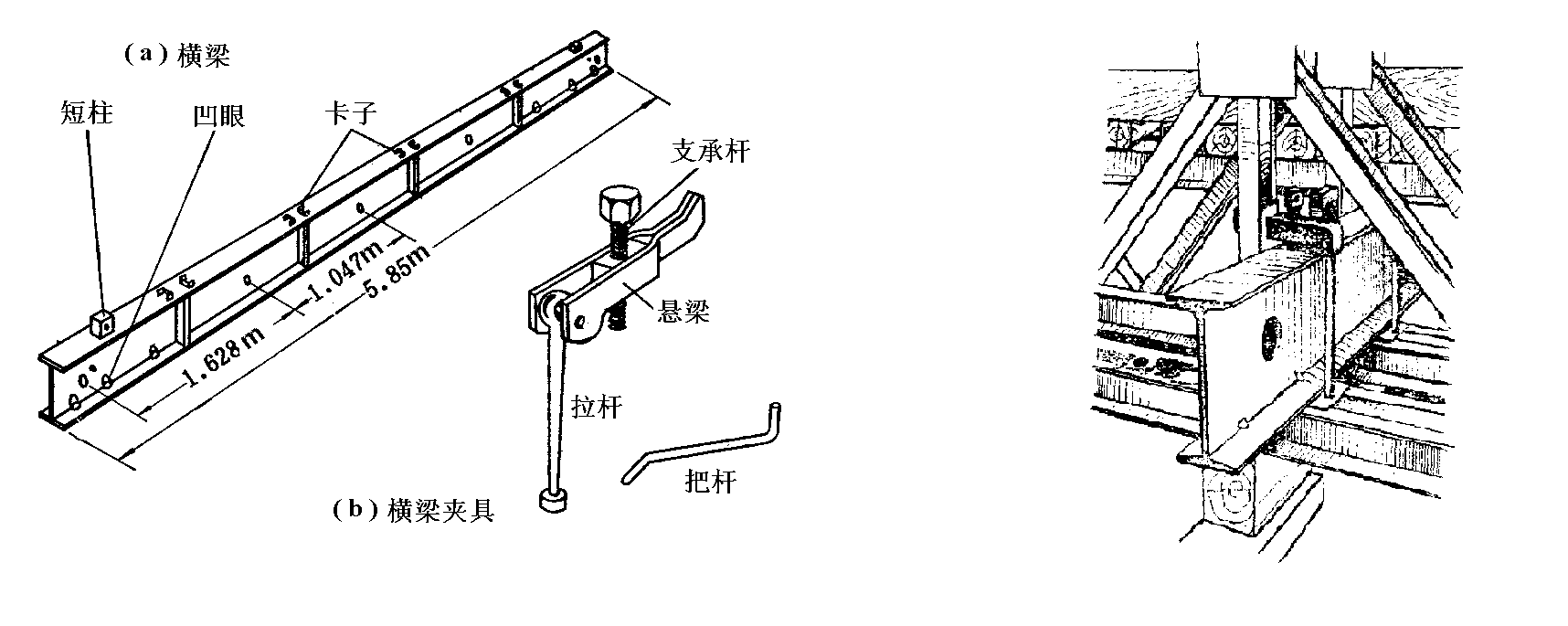
Specifications
1 To support Bailey decking System
2 Bailey Transom
3 Made of H-steel
4 Galvanize to protect the surface
Product Applications
The 200-type beam has a stronger bearing capacity and is different from the 321-type beam. The 200-type beam generally uses H400 steel for single lanes and H600 for double lanes. The beams are provided with bolt holes for connecting with the bridge deck.


